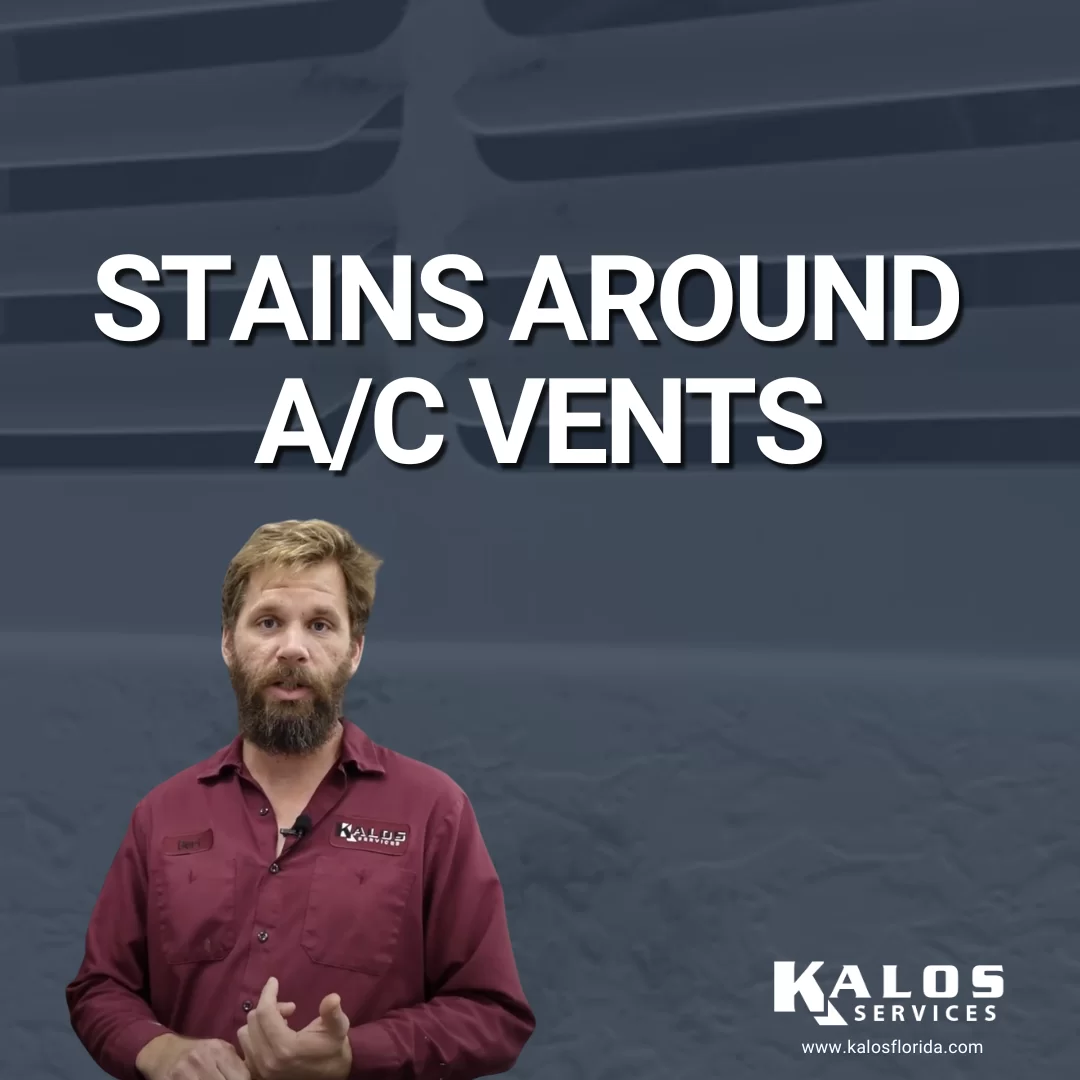So, you have noticed dark areas or stains forming around one or more of your A/C vents. Panic sets in as the dreaded “M” word flashes in your mind. The “M” word is MILDEW (we won’t even SAY the other word), and you wonder what’s causing it and if there’s anything you can do to stop it from getting any worse.
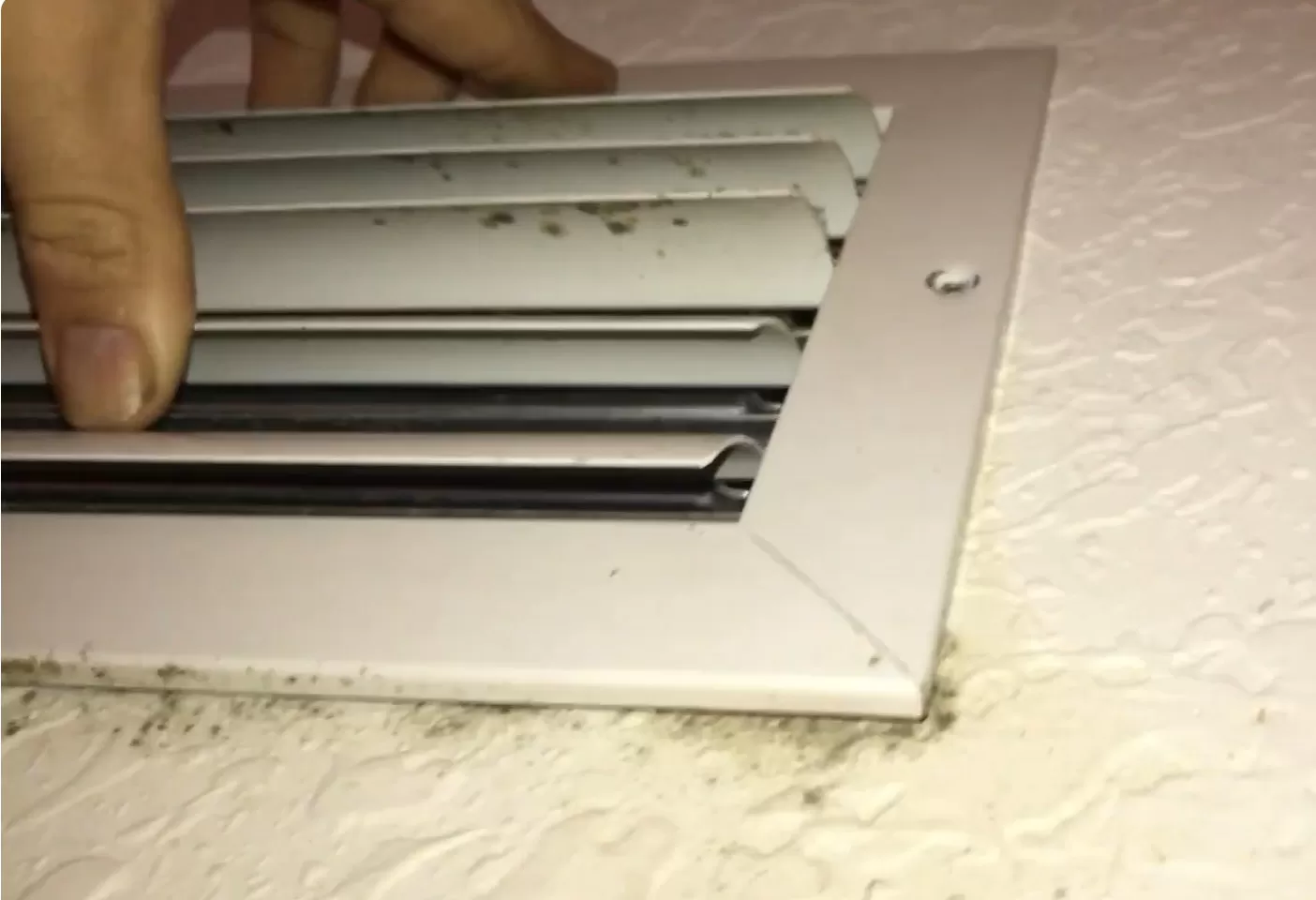
The wet stains around your vents are caused by condensation, which is caused by high humidity in your home or attic. Then, that’s when those dark spots start appearing. In this article, we will talk about what could be causing your issue, look at some things you could do to fix the problem, and discuss when it might be time to call in a professional.
There are 2 common sources of this potentially damaging and possibly dangerous moisture problem.
One is called duct sweat, and it happens in the attic.
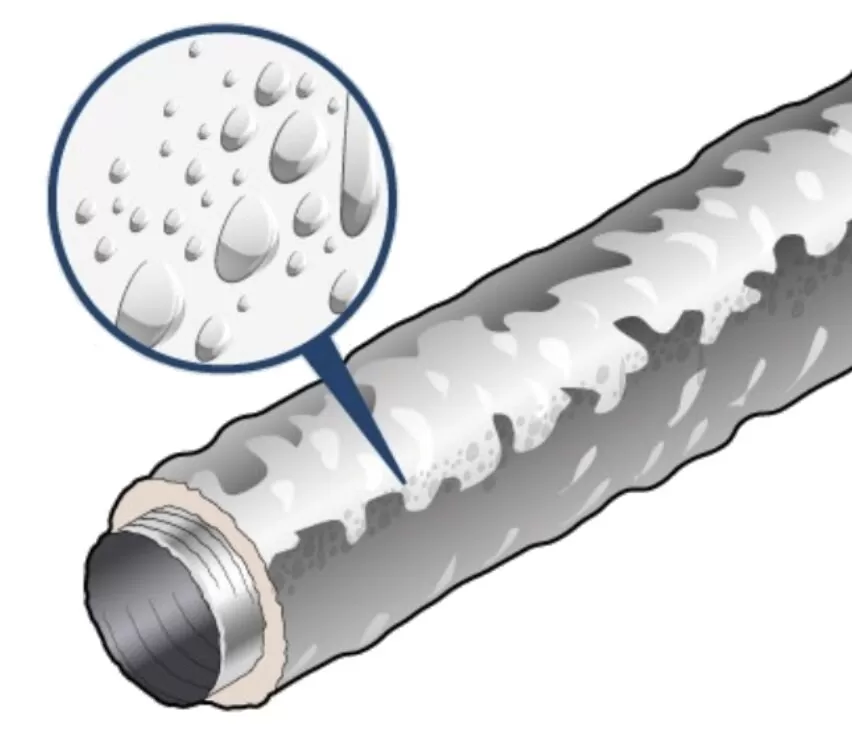
The other is vent sweat, and it happens in the living space.
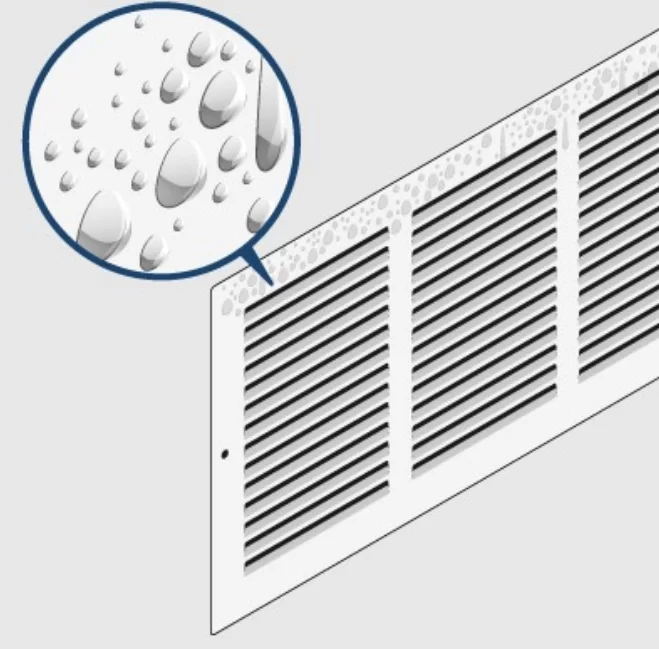
So what is causing this problem anyway?
Quite simply, the answer is high humidity.
Humidity refers to water vapor in the air. It’s all around us and is something that can and must be managed. Too much humidity can leave a home feeling muggy and cause surfaces to feel moist or even wet.
It is also the cause of sweaty ducts and vents. In excess, water vapor will condense to liquid water and attach itself to cold surfaces. Think of an ice-cold bottle of your favorite beverage in the hot summer air.

We’ve all seen this before. You take an ice-cold bottle out of the cooler, pop the top, and within moments, water droplets begin to form on the surface of the bottle. The water droplets aren’t coming from the inside of the bottle. They are actually being pulled from the hot humid air in a process called condensation. The same thing is happening with your A/C unit.
Picture the ductwork of your A/C unit traveling through the intensely hot environment of your attic. This ductwork has cold air blowing through it—just like the cold liquid in the bottle. If the hot air contains a lot of water vapor, condensation will begin to form on the surface of your ductwork. It happens a lot in areas where insulation might be compromised or areas where cold metal surfaces could be exposed, like the vent boot.
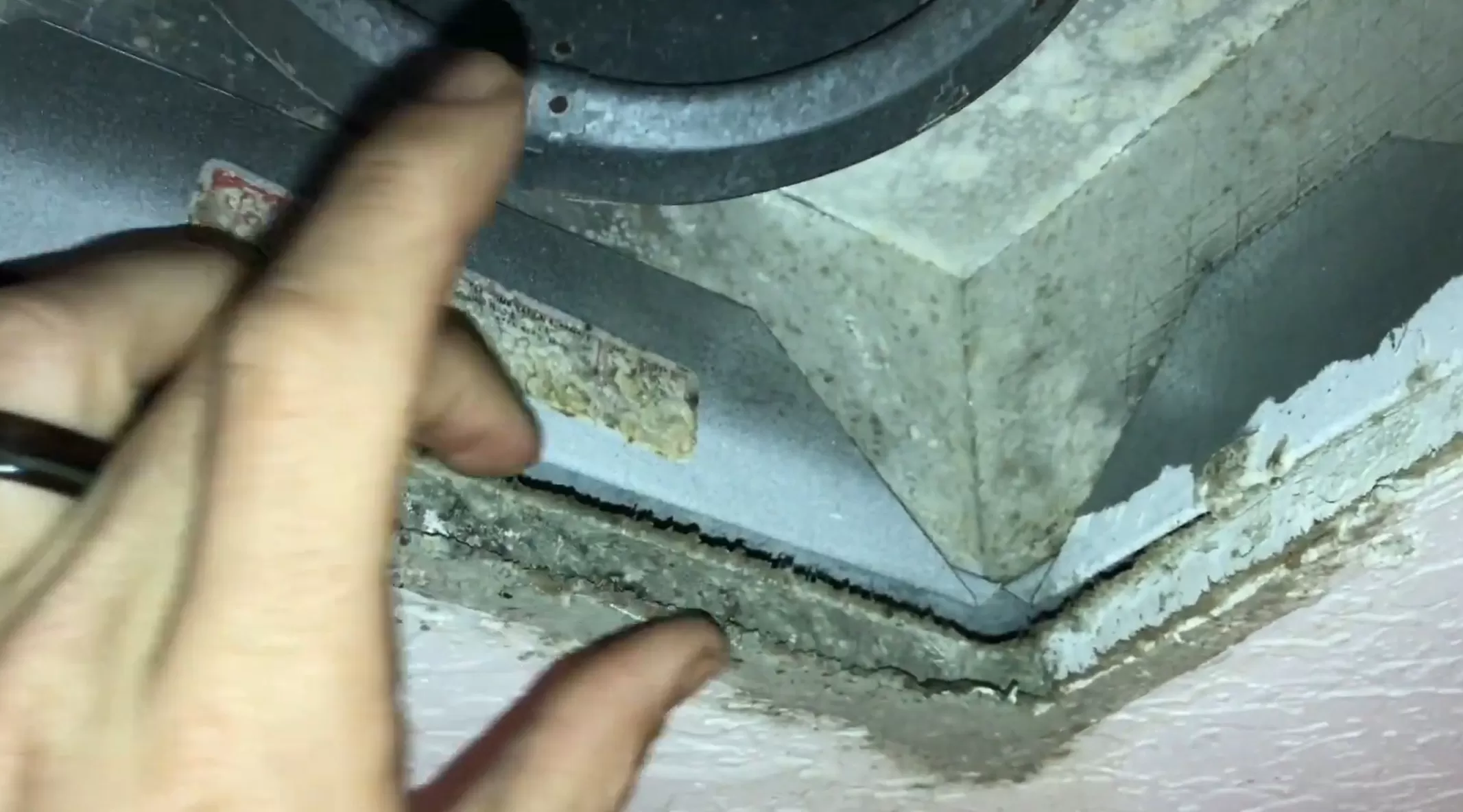
The vent boot is the connection point between the vent and the attic duct. This boot is usually made from galvanized metal, and if left exposed in a hot, humid attic, it will most definitely condense moisture from the air. These droplets will then drip onto the home’s ceiling drywall. Over time, it will develop into the black stains we are trying to avoid.
On the other side of this connection is the supply vents. These vents are usually made from galvanized metal (although there are some plastic options available), and they are responsible for dispersing the cold, conditioned air throughout the home. Because cold air is coming through them, they will have a very cold surface temperature. So, just as that cold bottle in the summer air drips with condensation, so too will these supply vents if humidity conditions in the home aren’t moderated.
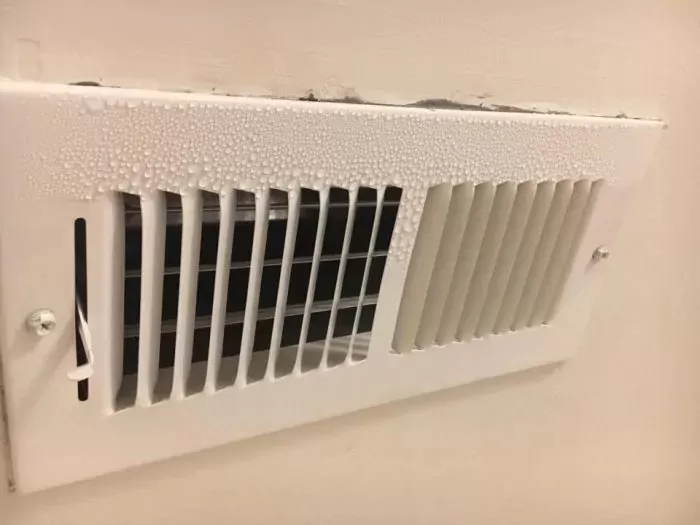
So, why is this happening in your home all of a sudden?
Your vents could have stains or dark spots around them for a couple of reasons. Some are simple fixes, some are not so simple, but usually, the root cause can be traced back to a change in your building’s shell.
Let’s start with a few questions.
- When did you notice this issue?
- Can you connect the issue to any changes to your home?
- Have you installed a new higher-volume kitchen exhaust hood?
- Has something like a doggy door been installed?
- Have you noticed that the weather stripping around doors and windows has become brittle and not sealing well?
Some changes to your home can allow hot, humid air to enter your home. Things like high-volume kitchen exhaust hoods can actually suck the air out of your kitchen so effectively that it can actually pull air from the outside through gaps and leaks around windows and doors. Or even worse, it could draw in attic air from around vents and recessed lighting. Hot, humid air getting into your home through an unwanted path is called infiltration.
You may not have considered it, but that new doggy door can also let in huge amounts of unwanted outside air.
How do you fix infiltration issues?
We can fix infiltration issues by sealing up those gaps and cracks and replacing weather stripping. Closed-cell spray foam and caulking are your best friends when it comes to sealing. Check around window and door frames or any other area that may be allowing outside air to get into the living space and seal these places.
Consider pulling your supply vents down and sealing the cracks around the duct boot to prevent attic air from seeping into the home. Check any other areas that provide a path to the attic. Recessed lights and attic access doors are pretty common problem areas that you may need to address.
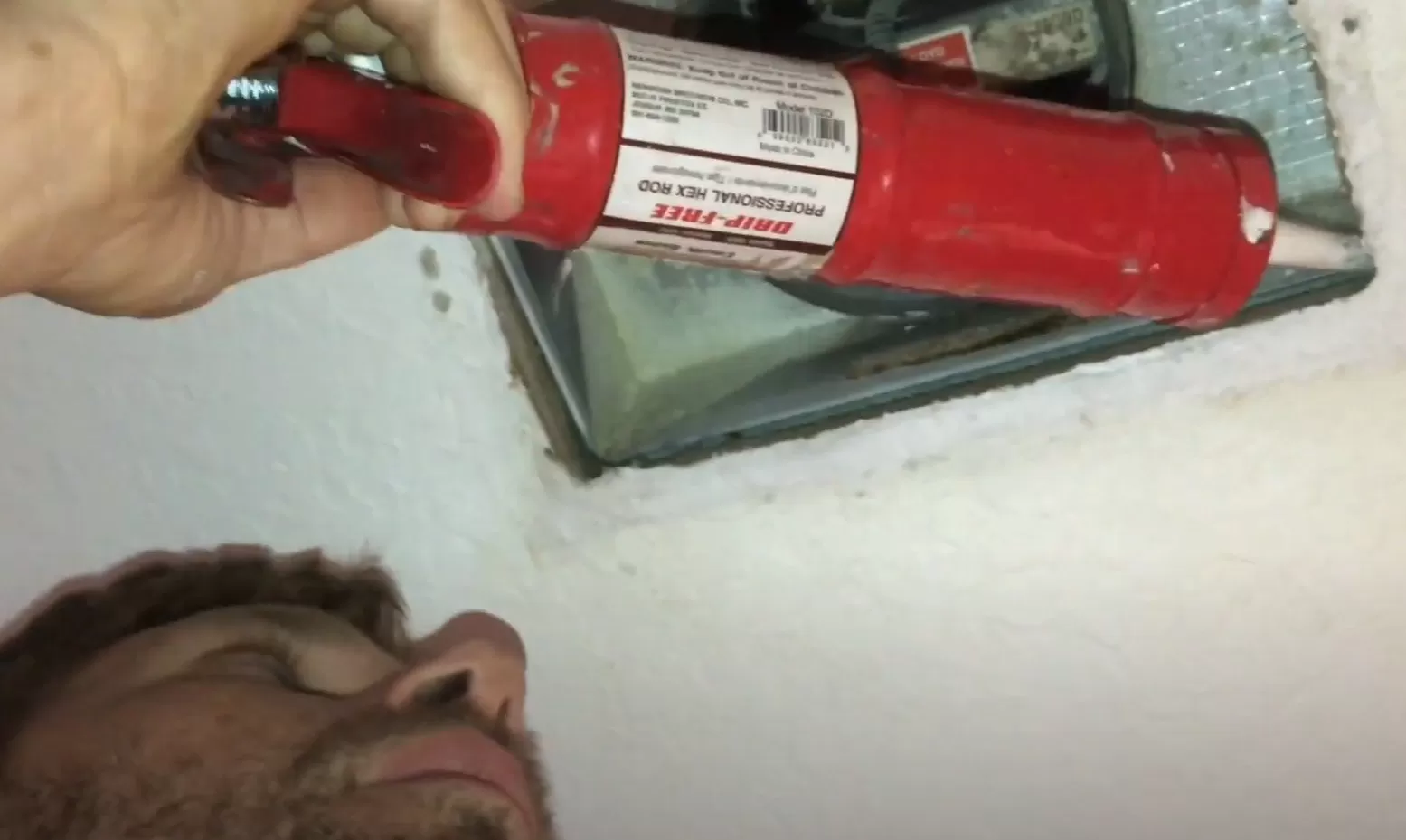
Other living space considerations
Consider lifestyle changes as well. Are you creating an increase in humidity?
- Are you cooking much more than usual (boiling water)?
- Are you taking longer hotter showers in a bathroom that has no exhaust?
- Have you installed a dishwasher in a home that has never had one before?
- Are you leaving doors or windows open?
- Are there kids running in and out from the pool deck?
- Is your clothes dryer inside of the house? If so, have you checked the exhaust vent pipe?
These are all possible sources of humidity.
Those were some ideas about interior conditions, now how about the attic?
Ask yourself if something has changed about my attic that has affected the dew point. The dew point is the temperature at which air must be cooled to reach a relative humidity (RH) of 100% and become saturated with water vapor. This means that the air can no longer hold water in its gas form and will condense into its liquid state.
Sometimes, innocent upgrades can have unintended consequences. For instance, adding a radiant barrier to your attic will keep it cooler—and quite possibly bring it below the dew point. This condition change could lead to sweaty ducts.
Adding additional attic ventilation will not only keep your attic cooler and lower the dew point but also keep a continuous supply of humid air moving over the ductwork. This will create an almost endless supply of condensation, which can lead to serious moisture-related damages.
If neither of these has happened, you may simply be dealing with air loss from the ductwork itself. Broken or torn ducts can leak conditioned air into the attic space. This scenario is likely to cause moisture to form throughout the attic, dampening the insulation, wood decking, and framing. This moisture can cause water damage and a bad smell.
Fixes?
Ultimately, the goal is humidity control.
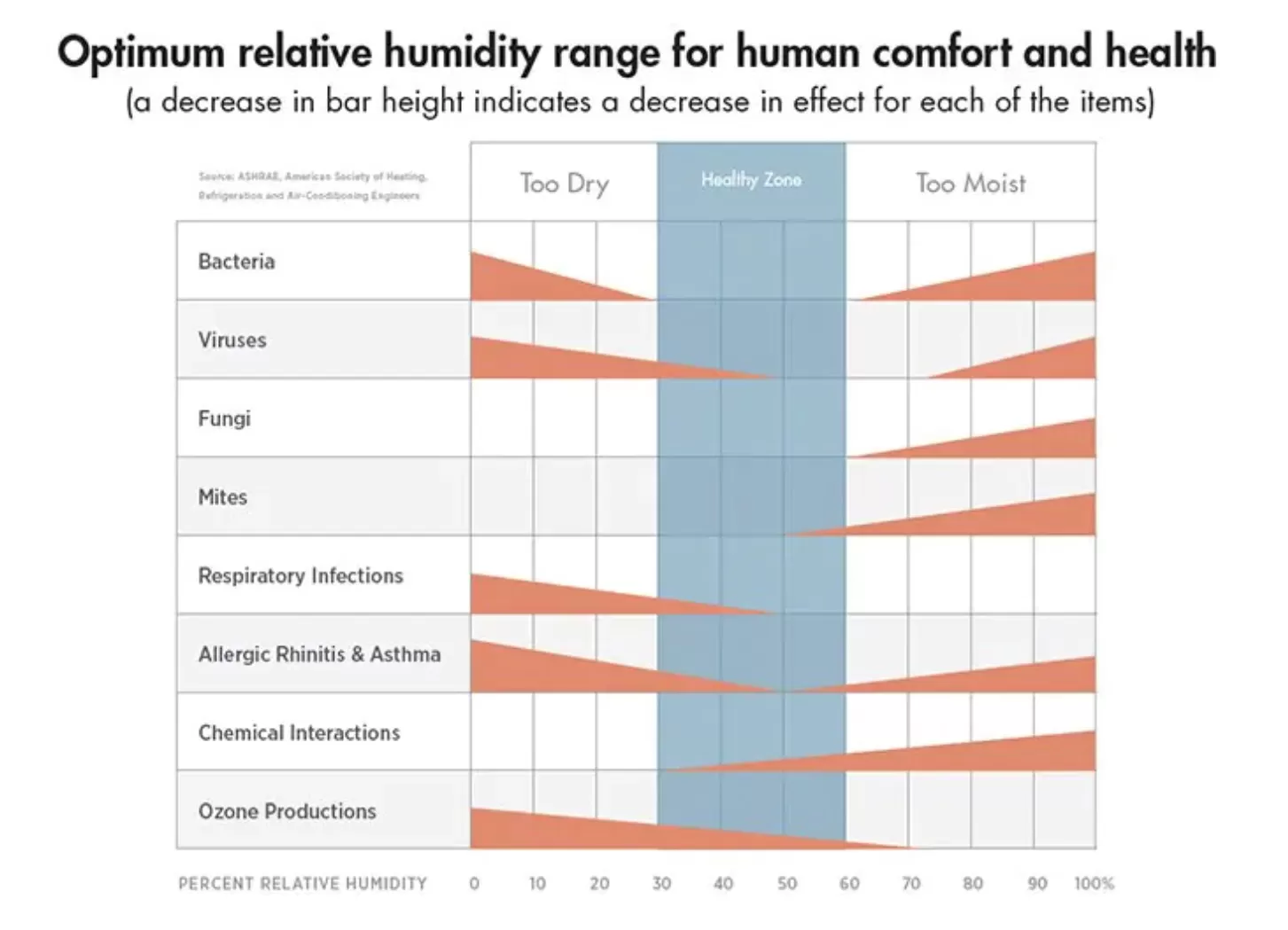
50% relative humidity is the sweet spot, as shown in the chart. We typically want to keep the air somewhere between 30 and 60% relative humidity to prevent unhealthy air conditions.
However, there is not a perfect one-size-fits-all solution to controlling humidity. Each house and its occupants are unique in the way they affect humidity and air conditions. Some people like to set their thermostat so low that you could hang meat while others are frequently in and out of doors. All of these characteristics have to be taken into consideration when trying to maintain proper humidity levels.
Dehumidification Strategies and Tactics
There are a few strategies that you can use to combat high humidity in your home. The first is to consider the airflow of your existing HVAC unit.
Contrary to popular belief, high airflow will not solve your humidity issues. Lowering your airflow will cause your unit to run longer, which allows the system to dehumidify the air. As the warmer return air passes over the cold air conditioner coils, some of the water vapor naturally comes out of the air as it condenses on the aluminum fins of the coil. It then drips down into the condensate pan and out of your house via the drain.
Another thing to consider is installing a whole-home dehumidifier. Whole-home dehumidifiers have come a long way in recent years, making them an attractive option for many homeowners. Take, for instance, the Sante Fe Ultra 120.
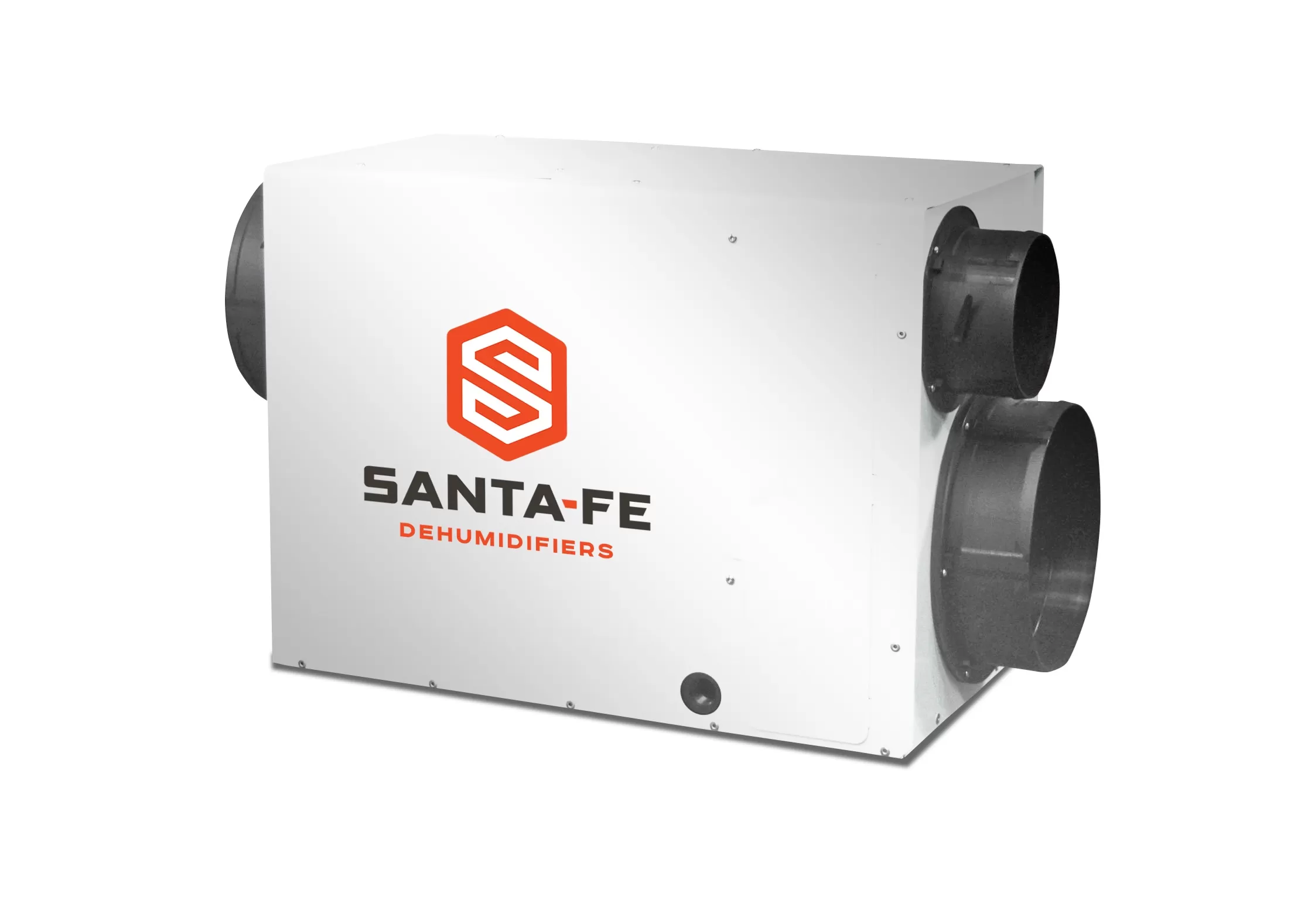
This unit will require professional installation, but when installed correctly, it can remove around 15 gallons of water per day. It will improve air quality and comfort while solving moisture issues.
Apart from relying on your HVAC unit or a dehumidifier to remove humidity from the air, you may also consider hiring a contractor to find out how much air leakage is happening in your home. Then, you can consider sealing gaps and cracks to prevent hot, humid air from getting into your home.
Conclusion
Moisture stains and dark spots around your vents have natural causes, but they should not be happening. The first step to dealing with them is to look at any possible home and lifestyle changes; even something as seemingly unrelated as upgrading the kitchen exhaust or leaving a patio door open can bring moisture into your home and cause your vents to sweat. Then, you’ll have a better idea of changes you can make or the people you need to call.
Kalos can seal around vents and install dehumidifiers. If you want someone to investigate the leakage in your home and seal the building shell, you may consider reaching out to blower door and spray foam contractors. If you’ve had issues with moisture, stains, or dark spots around vents, give us a call anytime, and we can send someone out to see what’s going on!

